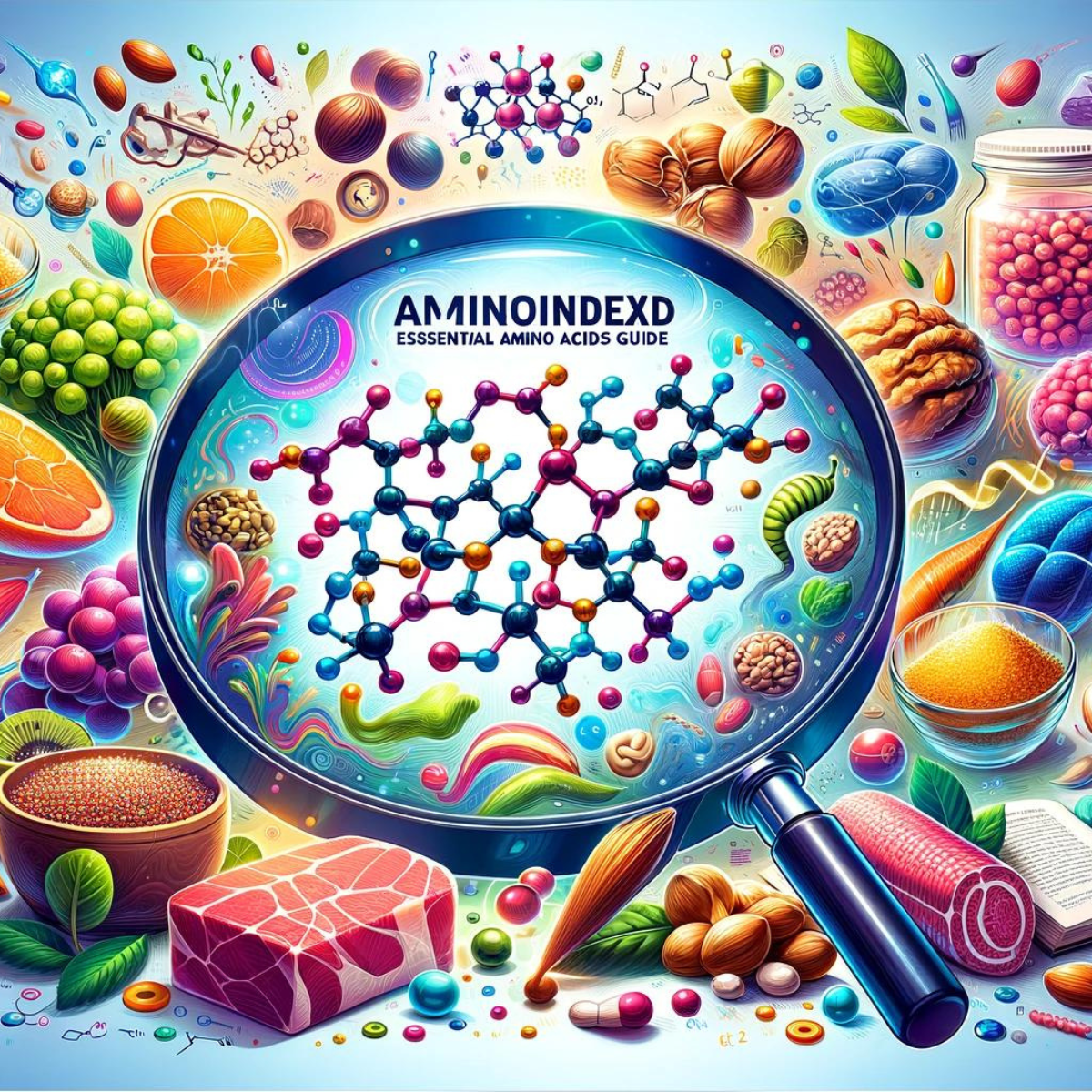สารบัญ
- การแนะนำ
- ปัญหาหัวเข่าที่พบบ่อย
- โรคข้อเข่าเสื่อม
- เอ็นอักเสบ
- หมอนรองกระดูกฉีกขาด
- อาการบาดเจ็บของเอ็น
- โรคเยื่อบุข้ออักเสบ
- ปัญหากระดูกสะบ้า
- สาเหตุของปัญหาเข่าที่พบบ่อย
- เมื่อไรจึงควรไปพบแพทย์
- การเยียวยาด้วยธรรมชาติ
- เคล็ดลับการใช้ชีวิตเพื่อสุขภาพหัวเข่า
- กรณีศึกษาหรือคำรับรอง
- คำถามที่พบบ่อย (FAQs)
- บทสรุป
- การปฏิเสธความรับผิดชอบ
การแนะนำ
ปัญหาที่หัวเข่าพบได้ทั่วไปและสามารถเกิดขึ้นกับผู้คนทุกวัยและทุกไลฟ์สไตล์ ไม่ว่าคุณจะเป็นนักกีฬา ผู้ที่ออกกำลังกายเป็นประจำ หรือผู้ที่ต้องเผชิญกับผลกระทบตามธรรมชาติจากการแก่ตัว ปัญหาที่หัวเข่าอาจส่งผลกระทบอย่างมากต่อชีวิตประจำวันของคุณ ปัญหาเหล่านี้อาจเกิดจากสาเหตุต่างๆ เช่น การบาดเจ็บ การใช้งานมากเกินไป และปัญหาสุขภาพอื่นๆ เช่น โรคข้ออักเสบ การทำความเข้าใจเกี่ยวกับปัญหาที่หัวเข่าเหล่านี้และวิธีแก้ไขตามธรรมชาติจะช่วยจัดการกับความเจ็บปวด ปรับปรุงการเคลื่อนไหว และเสริมสร้างสุขภาพหัวเข่าโดยรวม
ปัญหาหัวเข่าที่พบบ่อย
โรคข้อเข่าเสื่อม

โรคข้อเข่าเสื่อมเป็นโรคข้อเสื่อมที่กระดูกอ่อนที่ทำหน้าที่รองรับปลายกระดูกสึกกร่อนลงตามกาลเวลา ส่งผลให้เกิดอาการปวดและข้อแข็ง อาการต่างๆ ได้แก่ ปวด บวม เคลื่อนไหวได้น้อยลง และรู้สึกเหมือนถูกบดขยี้ที่หัวเข่า ทางเลือกในการรักษา ได้แก่ การควบคุมน้ำหนัก การกายภาพบำบัด การใช้ยา และในกรณีรุนแรงอาจต้องผ่าตัด
เอ็นอักเสบ

เอ็นอักเสบเกี่ยวข้องกับอาการอักเสบของเอ็น มักเกิดจากการเคลื่อนไหวซ้ำๆ หรือการใช้งานมากเกินไป อาการต่างๆ ได้แก่ ปวด โดยเฉพาะเมื่อขยับเข่า และเจ็บบริเวณข้อ การรักษา ได้แก่ การพักผ่อน การประคบเย็น การกดทับ การยกข้อให้สูง (RICE) ยาต้านการอักเสบ และการกายภาพบำบัด
หมอนรองกระดูกฉีกขาด

อาการหมอนรองกระดูกเข่าฉีกขาดมักเกิดขึ้นที่กระดูกอ่อนที่ทำหน้าที่รองรับข้อเข่า โดยมักเกิดจากการบิดหรือหมุนตัว อาการต่างๆ ได้แก่ ปวด บวม ตึง และเคลื่อนไหวเข่าได้ยาก การรักษาส่วนใหญ่มักเกี่ยวข้องกับการใช้ RICE การกายภาพบำบัด และในบางกรณีอาจต้องผ่าตัด
อาการบาดเจ็บของเอ็น (ACL, MCL, PCL)

อาการบาดเจ็บของเอ็นที่ช่วยพยุงหัวเข่ามักพบในนักกีฬา อาการต่างๆ ได้แก่ ปวด บวม ไม่มั่นคง และไม่สามารถรับน้ำหนักบนหัวเข่าได้ ทางเลือกในการรักษา ได้แก่ การผ่าตัดเสริมความแข็งแรงหัวเข่า การใส่เฝือก การกายภาพบำบัด และการผ่าตัดซ่อมแซมในรายที่มีอาการรุนแรง
โรคเยื่อบุข้ออักเสบ

โรคถุงน้ำในข้อเข่าอักเสบคืออาการอักเสบของถุงน้ำในข้อเข่า ซึ่งเป็นถุงเล็กๆ ที่เต็มไปด้วยของเหลว ทำหน้าที่รองรับข้อเข่า อาการต่างๆ ได้แก่ บวม ร้อน เจ็บปวด และตึง โดยทั่วไปการรักษาจะประกอบด้วยการพักผ่อน ประคบเย็น รับประทานยาต้านการอักเสบ และดูดของเหลวส่วนเกินออกหากจำเป็น
ปัญหากระดูกสะบ้า (Chondromalacia, Patellar Tendinitis)

ปัญหาที่เกี่ยวข้องกับกระดูกสะบ้าหัวเข่า ได้แก่ กระดูกอ่อน (chondromalacia) และเอ็นสะบ้าหัวเข่าอักเสบ (tendinitis) อาการต่างๆ ได้แก่ ปวดบริเวณกระดูกสะบ้าหัวเข่า บวม และเดินขึ้นบันไดหรือนั่งยองๆ ลำบาก ทางเลือกในการรักษา ได้แก่ การพักผ่อน การประคบเย็น การกายภาพบำบัด และอุปกรณ์พยุงข้อเข่าเพื่อปรับปรุงแนวของเข่า
สาเหตุของปัญหาเข่าที่พบบ่อย
อาการบาดเจ็บ
อาการบาดเจ็บที่หัวเข่าอาจเกิดขึ้นได้เนื่องจากการบาดเจ็บฉับพลัน อุบัติเหตุ หรือระหว่างกิจกรรมทางกาย อาการบาดเจ็บที่พบบ่อย ได้แก่ การฉีกขาดของเอ็น หมอนรองกระดูกฉีกขาด และกระดูกหัก ตัวอย่าง ได้แก่ การฉีกขาดของ ACL จากการหยุดกะทันหันหรือการเปลี่ยนทิศทาง การฉีกขาดของหมอนรองกระดูกจากการบิดเข่า และกระดูกหักจากการหกล้มหรือการชนกัน
ใช้มากเกินไป
การเคลื่อนไหวซ้ำๆ หรือการใช้แรงมากเกินไปที่หัวเข่าอาจทำให้เกิดอาการต่างๆ เช่น เอ็นอักเสบและถุงน้ำบริเวณข้ออักเสบ นักกีฬาและบุคคลที่เคลื่อนไหวซ้ำๆ เช่น วิ่งหรือกระโดด มีความเสี่ยงเป็นพิเศษ
โรคข้ออักเสบ
โรคข้ออักเสบ โดยเฉพาะโรคข้อเสื่อมและโรคข้ออักเสบรูมาตอยด์ อาจทำให้เกิดอาการปวดเข่าและข้อแข็ง ข้อเสื่อมเกี่ยวข้องกับการสึกหรอของกระดูกอ่อน ในขณะที่โรคข้ออักเสบรูมาตอยด์เป็นโรคที่เกิดจากภูมิคุ้มกันทำลายตนเองซึ่งทำให้เกิดการอักเสบในข้อต่อ
อายุ
กระบวนการชราตามธรรมชาติอาจทำให้โครงสร้างหัวเข่าสึกหรอลงอย่างช้าๆ ทำให้ผู้สูงอายุเสี่ยงต่อปัญหาที่หัวเข่ามากขึ้น ตัวอย่างเช่น การเปลี่ยนแปลงที่เสื่อมของกระดูกอ่อนและกล้ามเนื้อที่ช่วยพยุงหัวเข่าอ่อนแรง
โรคอ้วน
น้ำหนักเกินทำให้ข้อเข่าได้รับความเครียด ส่งผลให้มีความเสี่ยงต่อโรคข้อเสื่อมเพิ่มขึ้น ผู้ที่มีดัชนีมวลกาย (BMI) สูง มีแนวโน้มที่จะมีอาการปวดเข่าและมีปัญหาอื่นๆ ที่เกี่ยวข้องมากกว่า
เทคนิคที่ไม่เหมาะสม
การใช้เทคนิคที่ไม่เหมาะสมในการทำกิจกรรมทางกายหรือออกกำลังกายอาจนำไปสู่การบาดเจ็บที่หัวเข่าได้ ตัวอย่างเช่น การใช้ท่าทางที่ไม่ถูกต้องในการยกน้ำหนัก ท่าทางการวิ่งที่ไม่ถูกต้อง หรือการวอร์มอัพที่ไม่เพียงพอ
กล้ามเนื้ออ่อนแรง
กล้ามเนื้อรอบหัวเข่าที่อ่อนแออาจทำให้เข่าไม่มั่นคงและเกิดแรงกดดันมากขึ้นที่ข้อเข่า ความแข็งแรงที่ไม่เพียงพอของกล้ามเนื้อต้นขาด้านหน้าและกล้ามเนื้อหลังต้นขาอาจส่งผลให้เข่าอยู่ในตำแหน่งที่ไม่ถูกต้องและทำงานผิดปกติ
เมื่อไรจึงควรไปพบแพทย์
การทราบว่าเมื่อใดควรไปพบแพทย์เพื่อรักษาอาการบาดเจ็บที่เข่าถือเป็นสิ่งสำคัญในการป้องกันไม่ให้เกิดความเสียหายเพิ่มเติมและเพื่อให้ได้รับการรักษาที่เหมาะสม ต่อไปนี้คือสัญญาณบางอย่างที่บ่งบอกว่าถึงเวลาต้องปรึกษาผู้เชี่ยวชาญด้านการแพทย์:
- อาการปวดรุนแรง : อาการปวดอย่างรุนแรงและต่อเนื่องซึ่งไม่ดีขึ้นด้วยการพักผ่อนหรือยาที่ซื้อเอง
- อาการบวม : อาการบวมอย่างมากซึ่งไม่ลดลงด้วยการรักษาที่บ้าน เช่น ประคบเย็นหรือยกกระชับผิว
- ไม่สามารถรับน้ำหนักได้ : มีความยากลำบากหรือไม่สามารถลงน้ำหนักบนเข่าที่ได้รับผลกระทบได้
- ขอบเขตการเคลื่อนไหวที่จำกัด : ลดความสามารถในการเคลื่อนไหวเข่าอย่างเต็มที่ในทุกทิศทาง
- ความผิดปกติที่มองเห็นได้ : ความผิดปกติหรือการจัดตำแหน่งที่ไม่ถูกต้องของข้อเข่า
- สัญญาณของการติดเชื้อ : อาการที่บ่งบอกถึงการติดเชื้อในข้อเข่า เช่น มีรอยแดง ร้อน มีไข้ หรือหนาวสั่น
- อาการคงอยู่ : อาการที่ไม่ดีขึ้นหรือแย่ลงแม้จะรักษาที่บ้านแล้ว
- การบาดเจ็บเมื่อเร็วๆ นี้ : ปัญหาที่เข่าอันเป็นผลจากการบาดเจ็บหรือบาดแผลที่เกิดขึ้นเมื่อเร็วๆ นี้
การเยียวยาด้วยธรรมชาติ
การเยียวยาด้วยธรรมชาติเป็นวิธีที่มีประสิทธิภาพในการจัดการกับอาการปวดเข่าและปรับปรุงสุขภาพข้อต่อ โดยสามารถใช้ควบคู่กับการรักษาแบบแผนเพื่อบรรเทาอาการปวดและเสริมสร้างสุขภาพโดยรวมให้ดีขึ้น
ขมิ้นชัน (เคอร์คูมิน)
สารเคอร์คูมินซึ่งเป็นสารออกฤทธิ์ในขมิ้นมีคุณสมบัติต้านการอักเสบและต้านอนุมูลอิสระที่มีประสิทธิภาพ สามารถรับประทานเป็นอาหาร เป็นอาหารเสริม หรือทาภายนอกในรูปแบบยาพอก
ขิง
ขิงมีฤทธิ์ต้านการอักเสบซึ่งช่วยลดอาการปวดและบวมบริเวณหัวเข่าได้ สามารถรับประทาน ดื่มเป็นชา หรือทาบริเวณที่ได้รับผลกระทบในรูปของน้ำมันขิงได้
บอสเวลเลีย
Boswellia มีคุณสมบัติต้านการอักเสบ สามารถช่วยบรรเทาอาการปวดเข่าและปรับปรุงการทำงานของข้อต่อได้ โดยปกติจะรับประทานเป็นอาหารเสริม
เกลือเอปซัม
เกลือเอปซัมมีแมกนีเซียมซัลเฟตซึ่งช่วยลดการอักเสบและบรรเทาอาการปวดได้ การเติมเกลือเอปซัมลงในน้ำอุ่นแล้วแช่เข่าเป็นเวลา 15-20 นาทีอาจเป็นประโยชน์ได้
น้ำส้มสายชูแอปเปิ้ลไซเดอร์
เชื่อกันว่าน้ำส้มสายชูหมักจากแอปเปิ้ลช่วยละลายแร่ธาตุและสารพิษที่เป็นอันตรายในข้อเข่าได้ สามารถผสมกับน้ำแล้วดื่มทุกวัน หรือทาเฉพาะที่โดยผสมกับน้ำมันมะกอก
กรดไขมันโอเมก้า-3
กรดไขมันโอเมก้า 3 มีคุณสมบัติต้านการอักเสบซึ่งสามารถช่วยลดอาการปวดเข่าได้ โดยสามารถรับประทานได้ในอาหาร เช่น ปลา เมล็ดแฟลกซ์ และวอลนัท หรือรับประทานเป็นอาหารเสริมน้ำมันปลา
น้ำมันหอมระเหย (ยูคาลิปตัส, เปปเปอร์มินต์, ลาเวนเดอร์)
น้ำมันหอมระเหยสามารถบรรเทาอาการปวดและลดการอักเสบได้เมื่อใช้ทาเฉพาะที่ ควรเจือจางด้วยน้ำมันพาหะแล้วนวดลงในบริเวณหัวเข่าที่ได้รับผลกระทบ
การฝังเข็ม
การฝังเข็มสามารถช่วยลดอาการปวดและปรับปรุงการทำงานของเข่าได้โดยการกระตุ้นจุดเฉพาะในร่างกาย ดังนั้นจึงควรเข้ารับการรักษาจากผู้เชี่ยวชาญด้านการฝังเข็มที่มีคุณสมบัติเหมาะสม
การออกกำลังกายและการยืดกล้ามเนื้อ
การออกกำลังกายและการยืดเหยียดอย่างสม่ำเสมอสามารถเสริมสร้างความแข็งแรงให้กับกล้ามเนื้อรอบหัวเข่า เพิ่มความยืดหยุ่น และลดความเจ็บปวดได้ แนะนำให้ออกกำลังกายแบบแรงกระแทกต่ำ เช่น ว่ายน้ำ ปั่นจักรยาน และโยคะ ควบคู่ไปกับการออกกำลังกายเพื่อเสริมสร้างความแข็งแรงของหัวเข่าและการยืดเหยียด
เคล็ดลับการใช้ชีวิตเพื่อสุขภาพหัวเข่า
การดูแลรักษาหัวเข่าให้แข็งแรงต้องอาศัยการออกกำลังกายสม่ำเสมอ โภชนาการที่เหมาะสม และนิสัยที่ใส่ใจสุขภาพ ต่อไปนี้คือเคล็ดลับการใช้ชีวิตบางประการที่จะช่วยให้หัวเข่าของคุณแข็งแรงและปราศจากความเจ็บปวด:
รักษาน้ำหนักให้สมดุล
การมีน้ำหนักเกินจะทำให้ข้อเข่าต้องรับน้ำหนักมากขึ้น ส่งผลให้มีความเสี่ยงต่อโรคข้อเข่าเสื่อมมากขึ้น ควรรับประทานอาหารที่มีประโยชน์และออกกำลังกายสม่ำเสมอเพื่อรักษาน้ำหนักให้สมดุลและลดความเครียดที่เข่า
การออกกำลังกายสม่ำเสมอ
การออกกำลังกายอย่างสม่ำเสมอจะช่วยเสริมสร้างความแข็งแรงให้กับกล้ามเนื้อรอบๆ หัวเข่า ทำให้มีความมั่นคงและลดความเสี่ยงต่อการบาดเจ็บ ออกกำลังกายแบบแรงกระแทกต่ำ เช่น ว่ายน้ำ ปั่นจักรยาน และเดิน การออกกำลังกายเพื่อเสริมสร้างความแข็งแรงที่เน้นกล้ามเนื้อต้นขา กล้ามเนื้อหลังต้นขา และน่องก็มีประโยชน์เช่นกัน
การสวมรองเท้าที่เหมาะสม
การสวมรองเท้าที่มีส่วนรองอุ้งเท้าและรองรับแรงกระแทกที่ดีสามารถช่วยป้องกันปัญหาที่หัวเข่าได้ เลือกสวมรองเท้าที่พอดีและรองรับกิจกรรมของคุณได้อย่างเหมาะสม พิจารณาใช้แผ่นรองพื้นรองเท้าหากคุณมีเท้าแบนหรือมีปัญหาเฉพาะที่เท้าอื่นๆ
การวอร์มอัพและการคูลดาวน์
การเตรียมกล้ามเนื้อและข้อต่อให้พร้อมสำหรับการออกกำลังกายสามารถป้องกันการบาดเจ็บและเพิ่มประสิทธิภาพการออกกำลังกายได้ ควรวอร์มร่างกายให้เหมาะสมก่อนออกกำลังกายและคูลดาวน์หลังออกกำลังกาย รวมถึงยืดกล้ามเนื้อเพื่อเพิ่มความยืดหยุ่นและลดความตึงของกล้ามเนื้อ
ฝึกการยืนตัวตรง
การรักษาท่าทางที่ดีจะช่วยกระจายน้ำหนักให้สม่ำเสมอและลดแรงกดที่หัวเข่าโดยไม่จำเป็น ยืนและนั่งตัวตรงโดยให้ไหล่ไปด้านหลังและเกร็งกล้ามเนื้อแกนกลางลำตัว หลีกเลี่ยงการหลังค่อมหรือเอนไปด้านใดด้านหนึ่ง
รักษาระดับน้ำในร่างกายให้เหมาะสม
การดื่มน้ำให้เพียงพอเป็นสิ่งสำคัญในการรักษาสุขภาพข้อต่อและการทำงานของร่างกายโดยรวม ดื่มน้ำให้มากตลอดทั้งวันเพื่อให้ข้อต่อของคุณได้รับการหล่อลื่นและสนับสนุนกระบวนการซ่อมแซมตามธรรมชาติของร่างกาย
การรับประทานอาหารที่สมดุล
การรับประทานอาหารที่มีสารอาหารสูงจะช่วยเสริมสร้างสุขภาพข้อต่อและความสมบูรณ์ของร่างกายโดยรวม รับประทานอาหารที่มีวิตามิน แร่ธาตุ และสารต้านอนุมูลอิสระสูง เช่น ผลไม้ ผัก โปรตีนไม่ติดมัน และธัญพืชไม่ขัดสี กรดไขมันโอเมก้า 3 ในปลา เมล็ดแฟลกซ์ และวอลนัทยังช่วยลดการอักเสบได้อีกด้วย
ฟังร่างกายของคุณ
การใส่ใจสัญญาณของร่างกายสามารถช่วยหลีกเลี่ยงการใช้งานมากเกินไปและป้องกันการบาดเจ็บได้ หากคุณรู้สึกเจ็บหรือไม่สบายที่หัวเข่า ให้หยุดพักและปล่อยให้ร่างกายได้พักผ่อนและฟื้นฟู หลีกเลี่ยงการฝืนทนกับความเจ็บปวด
กรณีศึกษาหรือคำรับรอง
การรวมตัวอย่างและคำรับรองในชีวิตจริงสามารถให้ข้อมูลเชิงลึกอันมีค่าและสร้างแรงบันดาลใจให้กับผู้อ่านได้ โดยแสดงให้เห็นว่าผู้อื่นจัดการกับปัญหาหัวเข่าของตนได้สำเร็จด้วยวิธีการรักษาตามธรรมชาติและการเปลี่ยนแปลงวิถีชีวิตอย่างไร ต่อไปนี้คือตัวอย่างบางส่วน:
กรณีศึกษาที่ 1: การเดินทางของเจนกับโรคข้อเข่าเสื่อม
เจน หญิงวัย 55 ปี ได้รับการวินิจฉัยว่าเป็นโรคข้อเข่าเสื่อม เธอมีอาการปวดและตึงตลอดเวลา ซึ่งทำให้เคลื่อนไหวได้จำกัด เจนจึงเริ่มรับประทานอาหารเสริมขมิ้นชันและชาขิงในกิจวัตรประจำวันของเธอ นอกจากนี้ เธอยังเริ่มออกกำลังกายแบบไม่กระทบกระเทือน เช่น ว่ายน้ำและโยคะ เพื่อเสริมสร้างความแข็งแรงให้กับกล้ามเนื้อบริเวณเข่า หลังจากผ่านไปหลายเดือน เจนสังเกตเห็นว่าอาการปวดลดลงอย่างเห็นได้ชัดและมีความยืดหยุ่นที่ดีขึ้น เธอสามารถกลับไปทำกิจกรรมโปรดหลายๆ อย่างได้ และใช้ชีวิตอย่างกระตือรือร้น
กรณีศึกษาที่ 2: การฟื้นตัวของมาร์คจากอาการเอ็นอักเสบ
มาร์ก นักวิ่งตัวยงวัย 40 ปี เกิดอาการเอ็นหัวเข่าอักเสบเนื่องจากใช้งานมากเกินไป เขารู้สึกปวดอย่างรุนแรงระหว่างและหลังวิ่ง มาร์กเริ่มใช้การบำบัดด้วยความเย็นและความร้อนเพื่อควบคุมอาการอักเสบและความเจ็บปวด นอกจากนี้ เขายังใช้ผลิตภัณฑ์เสริมอาหาร Boswellia และปรับเทคนิคการวิ่งเพื่อลดความตึงของหัวเข่า ภายในเวลาไม่กี่สัปดาห์ อาการปวดของมาร์กก็ทุเลาลง และเขาสามารถกลับมาวิ่งได้อีกครั้งโดยมีท่าทางที่ดีขึ้นและมีความเสี่ยงต่อการบาดเจ็บเพิ่มเติมน้อยลง
คำรับรอง: ประสบการณ์ของซาราห์กับแนวทางการรักษาแบบธรรมชาติ
ซาราห์ พนักงานออฟฟิศวัย 30 ปี ประสบปัญหาอาการปวดเข่าเนื่องมาจากการนั่งเป็นเวลานานและการวางตัวที่ไม่ถูกต้อง เธอจึงเริ่มใช้เอสเซนเชียลออยล์ เช่น ยูคาลิปตัสและเปเปอร์มินต์เพื่อบรรเทาอาการปวดเฉพาะที่ นอกจากนี้ ซาราห์ยังปรับเปลี่ยนไลฟ์สไตล์ด้วย เช่น การยืดเส้นยืดสายเป็นประจำและใช้โต๊ะทำงานแบบยืนเพื่อปรับปรุงการวางตัว เธอรายงานว่าอาการปวดบรรเทาลงอย่างเห็นได้ชัดและสุขภาพเข่าดีขึ้น ด้วยนิสัยใหม่นี้ เธอจึงรู้สึกมีพลังและทำงานได้อย่างมีประสิทธิภาพมากขึ้น
กรณีศึกษาที่ 3: ความสำเร็จของเดวิดกับโรคเอ็นหัวเข่าอักเสบ
เดวิด นักบาสเกตบอลวัย 25 ปี มีอาการเอ็นหัวเข่าอักเสบจากการกระโดดซ้ำๆ และการฝึกซ้อมอย่างหนัก เขาเริ่มอาบน้ำเกลือเอปซัมเพื่อบรรเทาอาการเอ็นอักเสบ และรับประทานอาหารที่มีกรดไขมันโอเมก้า 3 เดวิดยังได้ร่วมงานกับนักกายภาพบำบัดเพื่อเสริมสร้างกล้ามเนื้อต้นขาด้านหน้าและปรับแนวเข่าให้ดีขึ้น หลังจากนั้นไม่กี่เดือน อาการปวดเข่าของเดวิดลดลงอย่างเห็นได้ชัด และเขาสามารถกลับมาฝึกซ้อมตามปกติได้โดยได้รับการพยุงเข่าที่ดีขึ้นและมีความเสี่ยงต่อการบาดเจ็บซ้ำน้อยลง
คำถามที่พบบ่อย (FAQs)
สาเหตุที่พบบ่อยที่สุดของอาการปวดเข่าคืออะไร?
สาเหตุทั่วไป ได้แก่ อาการบาดเจ็บ (เช่น เอ็นฉีกขาดและหมอนรองกระดูกฉีกขาด) การใช้งานมากเกินไป (นำไปสู่ภาวะต่างๆ เช่น เอ็นอักเสบ) โรคข้ออักเสบ (โดยเฉพาะโรคข้อเสื่อม) และปัจจัยต่างๆ เช่น อายุที่มากขึ้น โรคอ้วน และเทคนิคที่ไม่เหมาะสมระหว่างทำกิจกรรมทางกาย
การรักษาแบบธรรมชาติสามารถรักษาอาการปวดเข่าได้อย่างมีประสิทธิภาพหรือไม่?
การเยียวยาด้วยธรรมชาติสามารถจัดการกับอาการปวดเข่าได้อย่างมีประสิทธิภาพและปรับปรุงสุขภาพข้อต่อให้ดีขึ้น สามารถลดการอักเสบ บรรเทาอาการปวด และเพิ่มความสมบูรณ์ของร่างกายโดยรวม อย่างไรก็ตาม การปรึกษาหารือกับผู้เชี่ยวชาญด้านการดูแลสุขภาพก่อนเริ่มการรักษาใดๆ ถือเป็นสิ่งสำคัญ โดยเฉพาะอย่างยิ่งหากคุณมีปัญหาสุขภาพอยู่แล้ว
ฉันจะป้องกันปัญหาหัวเข่าได้อย่างไร?
มาตรการป้องกัน ได้แก่ การรักษาน้ำหนักให้อยู่ในเกณฑ์ปกติ ออกกำลังกายแบบไม่กระทบกระเทือนร่างกายเป็นประจำ สวมรองเท้าที่เหมาะสม วอร์มร่างกายก่อนทำกิจกรรมทางกาย ฝึกบุคลิกภาพที่ดี ดื่มน้ำให้เพียงพอ และฟังร่างกายเพื่อหลีกเลี่ยงการใช้งานมากเกินไป
ฉันควรไปพบแพทย์เมื่อมีอาการปวดเข่าเมื่อไร?
คุณควรไปพบแพทย์หากคุณมีอาการปวดอย่างรุนแรง อาการบวมอย่างมีนัยสำคัญ ไม่สามารถรับน้ำหนักได้ ข้อจำกัดในการเคลื่อนไหว ความผิดปกติที่เห็นได้ชัด อาการติดเชื้อ (เช่น รอยแดง ร้อน มีไข้) มีอาการต่อเนื่องแม้จะรักษาที่บ้านแล้ว หรือมีปัญหาที่เข่าหลังจากได้รับบาดเจ็บเมื่อเร็วๆ นี้
ท่าออกกำลังกายแบบมีแรงกระแทกต่ำเพื่อเพิ่มความแข็งแรงให้เข่ามีอะไรบ้าง?
การออกกำลังกายแบบแรงกระแทกต่ำที่ช่วยเสริมสร้างความแข็งแรงให้กับเข่า ได้แก่ การว่ายน้ำ การปั่นจักรยาน การเดิน และโยคะ การออกกำลังกายเพื่อเสริมสร้างความแข็งแรงโดยเน้นที่กล้ามเนื้อต้นขา กล้ามเนื้อหลังต้นขา และน่องก็มีประโยชน์เช่นกัน ควรออกกำลังกายด้วยท่าทางที่ถูกต้องและค่อยๆ เพิ่มความเข้มข้นขึ้น
การรับประทานอาหารสามารถส่งผลต่อสุขภาพเข่าได้หรือไม่?
ใช่ การรับประทานอาหารที่มีสารอาหารต้านการอักเสบ วิตามิน และแร่ธาตุในปริมาณสมดุลสามารถช่วยรักษาสุขภาพหัวเข่าได้ กรดไขมันโอเมก้า 3 ในปลา เมล็ดแฟลกซ์ และวอลนัทสามารถช่วยลดการอักเสบได้ การรักษาน้ำหนักให้อยู่ในเกณฑ์ปกติด้วยการรับประทานอาหารยังช่วยลดความเครียดที่หัวเข่าได้อีกด้วย
การรักษาด้วยวิธีธรรมชาติมีความเสี่ยงใดบ้างหรือไม่?
โดยทั่วไปแล้วแนวทางการรักษาตามธรรมชาติถือว่าปลอดภัย แต่บางครั้งอาจเกิดปฏิกิริยากับยาหรือทำให้เกิดอาการแพ้ได้ จึงจำเป็นต้องใช้ตามคำแนะนำและปรึกษาผู้เชี่ยวชาญด้านการแพทย์ โดยเฉพาะหากคุณมีปัญหาสุขภาพเรื้อรังหรือกำลังรับประทานยาอื่นๆ
บทบาทการกายภาพบำบัดในการรักษาปัญหาข้อเข่ามีอะไรบ้าง?
การกายภาพบำบัดมีความสำคัญอย่างยิ่งในการรักษาปัญหาที่หัวเข่า โดยจะช่วยเสริมสร้างความแข็งแรงให้กับกล้ามเนื้อรอบๆ หัวเข่า เพิ่มความยืดหยุ่น ลดความเจ็บปวด และปรับปรุงการทำงานของหัวเข่าโดยรวม นักกายภาพบำบัดสามารถสร้างโปรแกรมการออกกำลังกายเฉพาะบุคคลเพื่อแก้ไขปัญหาเฉพาะและป้องกันการบาดเจ็บเพิ่มเติมได้
บทสรุป
การดูแลรักษาหัวเข่าให้มีสุขภาพดีถือเป็นสิ่งสำคัญสำหรับการใช้ชีวิตที่กระฉับกระเฉงและปราศจากความเจ็บปวด การทำความเข้าใจปัญหาหัวเข่าทั่วไป สาเหตุ และแนวทางการรักษาตามธรรมชาติที่มีประสิทธิภาพ จะช่วยให้คุณดำเนินการเชิงรุกเพื่อจัดการกับอาการปวดเข่าและปรับปรุงสุขภาพข้อต่อได้ การเปลี่ยนแปลงวิถีชีวิต เช่น การออกกำลังกายสม่ำเสมอ การรับประทานอาหารที่สมดุล และเทคนิคที่เหมาะสมระหว่างทำกิจกรรมทางกาย จะช่วยปรับปรุงการทำงานของหัวเข่าและป้องกันปัญหาในอนาคตได้อย่างมาก
หากคุณมีอาการปวดเข่าเรื้อรังหรือรุนแรง อย่าลังเลที่จะปรึกษาผู้เชี่ยวชาญด้านการแพทย์เพื่อรับการวินิจฉัยและแผนการรักษาที่เหมาะสม การผสมผสานคำแนะนำทางการแพทย์กับแนวทางการรักษาตามธรรมชาติและมาตรการป้องกันสามารถให้ผลลัพธ์ที่ดีที่สุดสำหรับสุขภาพเข่าของคุณได้
ลงมือปฏิบัติตั้งแต่วันนี้เพื่อปกป้องและปรับปรุงสุขภาพหัวเข่าของคุณ สำรวจอาหารเสริมจากธรรมชาติ น้ำมันหอมระเหย และอุปกรณ์ช่วยพยุงร่างกายของเราเพื่อส่งเสริมสุขภาพข้อต่อและบรรเทาอาการปวดเข่า เข้าร่วมโครงการสมาชิก Wellness ของเราเพื่อรับสิทธิประโยชน์พิเศษ รวมถึงส่วนลดและการจัดส่งฟรีสำหรับทุกคำสั่งซื้อ
การปฏิเสธความรับผิดชอบ
ข้อมูลในบทความนี้มีไว้เพื่อวัตถุประสงค์ทางการศึกษาเท่านั้น และไม่มีจุดประสงค์เพื่อทดแทนคำแนะนำทางการแพทย์ การวินิจฉัย หรือการรักษาจากผู้เชี่ยวชาญ ควรขอคำแนะนำจากแพทย์หรือผู้ให้บริการด้านสุขภาพที่มีคุณสมบัติเหมาะสมเสมอหากคุณมีคำถามใดๆ เกี่ยวกับอาการป่วย อย่าเพิกเฉยต่อคำแนะนำทางการแพทย์จากผู้เชี่ยวชาญหรือชะลอการขอคำแนะนำดังกล่าวเนื่องจากสิ่งที่คุณอ่านในบทความนี้ การใช้ข้อมูลใดๆ ที่ให้ไว้นี้ถือเป็นความเสี่ยงของคุณเอง
อ้างอิง
- Mayo Clinic. (nd). โรคข้อเข่าเสื่อม สืบค้นเมื่อ 28 มิถุนายน 2024 จาก https://www.mayoclinic.org/diseases-conditions/osteoarthritis/symptoms-causes/syc-20351925
- สถาบันโรคข้ออักเสบและโรคกล้ามเนื้อและกระดูกและผิวหนังแห่งชาติ (NIAMS) (nd). การบาดเจ็บจากกีฬา สืบค้นเมื่อวันที่ 28 มิถุนายน 2024 จาก https://www.niams.nih.gov/health-topics/sports-injuries
- American Academy of Orthopaedic Surgeons (AAOS). (nd). Meniscus Tears. สืบค้นเมื่อ 28 มิถุนายน 2024 จาก https://orthoinfo.aaos.org/en/diseases--conditions/meniscus-tears/
- คลีฟแลนด์คลินิก (nd). เอ็น. สืบค้นเมื่อ 28 มิถุนายน 2024 จาก https://my.clevelandclinic.org/health/body/21604-ligament
- Johns Hopkins Medicine. (nd). โรคถุงน้ำในข้ออักเสบ สืบค้นเมื่อ 28 มิถุนายน 2024 จาก https://www.hopkinsmedicine.org/health/conditions-and-diseases/bursitis
- ตัวเร่งปฏิกิริยาฮาร์วาร์ด (nd). Chondromalacia Patellae ดึงข้อมูลเมื่อ 28 มิถุนายน 2024 จาก https://connects.catalyst.harvard.edu/Profiles/display/Concept/Chondromalacia%20Patellae
- Medical News Today. (nd). การเยียวยาโรคข้ออักเสบแบบธรรมชาติ ดึงข้อมูลเมื่อวันที่ 28 มิถุนายน 2024 จาก https://www.medicalnewstoday.com/articles/natural-remedies-for-arthritis
- PubMed Central. (2021). ขมิ้นชันและโรคข้อเสื่อม สืบค้นเมื่อ 28 มิถุนายน 2024 จาก https://pubmed.ncbi.nlm.nih.gov/33500785/
- WebMD. (nd). ขิง: ประโยชน์และความเสี่ยง สืบค้นเมื่อวันที่ 28 มิถุนายน 2024 จาก https://www.webmd.com/vitamins-and-supplements/ginger-uses-and-risks
- ศูนย์สุขภาพเสริมและบูรณาการแห่งชาติ (NCCIH) (nd) แนวทางการดูแลสุขภาพเสริมสำหรับอาการปวดเรื้อรัง สืบค้นเมื่อวันที่ 28 มิถุนายน 2024 จาก https://www.nccih.nih.gov/health/providers/digest/complementary-health-approaches-for-chronic-pain-science
- PubMed Central. (2018). เกลือเอปซัม: ประโยชน์และการใช้งาน สืบค้นเมื่อวันที่ 28 มิถุนายน 2024 จาก https://www.ncbi.nlm.nih.gov/pmc/articles/PMC5855212/
- Arthritis Foundation. (nd). ปลาที่ดีที่สุดสำหรับโรคข้ออักเสบ สืบค้นเมื่อ 28 มิถุนายน 2024 จาก https://www.arthritis.org/health-wellness/healthy-living/nutrition/healthy-eating/best-fish-for-arthritis
- ศูนย์สุขภาพเชิงบูรณาการและเสริมแห่งชาติ (NCCIH) (nd) อโรมาเทอราพี สืบค้นเมื่อ 28 มิถุนายน 2024 จาก https://www.nccih.nih.gov/health/aromatherapy
- Cochrane Library. (2024). การฝังเข็มและการฝังเข็มไฟฟ้าสำหรับโรคข้ออักเสบรูมาตอยด์ สืบค้นเมื่อ 28 มิถุนายน 2024 จาก https://www.cochrane.org/CD003788/MUSKEL_acupunture-and-electroacupuncture-for-rheumatoid-arthritis
- สถาบันแห่งชาติเพื่อการสูงวัย (NIA) (nd). การออกกำลังกายและกิจกรรมทางกาย สืบค้นเมื่อวันที่ 28 มิถุนายน 2024 จาก https://www.nia.nih.gov/health/exercise-and-physical-activity
- Better Health Channel (รัฐบาลรัฐวิกตอเรีย) (nd) โรคข้อเข่าเสื่อม สืบค้นเมื่อ 28 มิถุนายน 2024 จาก https://www.betterhealth.vic.gov.au/health/conditionsandtreatments/osteoarthritis
- Healthdirect Australia. (nd). Knee Pain. สืบค้นเมื่อวันที่ 28 มิถุนายน 2024 จาก https://www.healthdirect.gov.au/knee-pain
- Arthritis Australia (nd). การจัดการโรคข้ออักเสบ สืบค้นเมื่อ 28 มิถุนายน 2024 จาก https://arthritisaustralia.com.au/managing-arthritis/
- Royal Australian College of General Practitioners (RACGP) (nd) Clinical Guidelines for the Diagnosis and Management of Knee Osteoarthritis ดึงข้อมูลเมื่อวันที่ 28 มิถุนายน 2024 จาก https://www.racgp.org.au/clinical-resources/clinical-guidelines/key-racgp-guidelines/view-all-racgp-guidelines/knee-and-hip-osteoarthritis
















